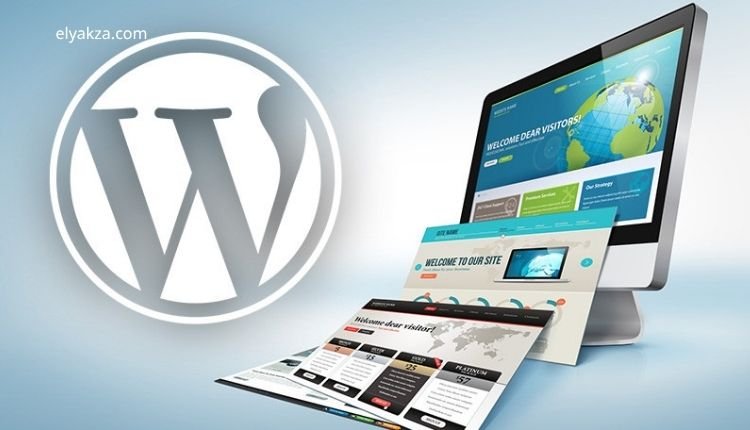In today’s digital age, creating a professional website has become a crucial necessity—whether you’re a business owner, a blogger, or someone looking to launch a personal project. Websites are not just digital storefronts; they are powerful tools for engaging audiences, showcasing products or services, and even generating income.
قائمة المحتويات
Fortunately, with WordPress, building a professional website no longer requires advanced technical knowledge. In this article, we’ll walk you through a comprehensive, step-by-step guide to creating a professional website using a premium template—no coding required.
Why Choose WordPress for Your Website?
WordPress is the world’s most popular content management system (CMS), powering over 40% of websites on the internet. Here’s why it’s the ideal choice:
- Ease of Use: A simple user interface that makes site management easy.
- High Flexibility: Create any type of website—blog, eCommerce store, or news portal.
- Multilingual Support: Includes RTL support for languages like Arabic.
- Vast Support Community: A large user and developer community for help and resources.
- Customization: Thousands of themes and plugins to easily tailor your site.
Step One – Choosing the Right Hosting Service
Hosting is the foundation of any website—it’s where your website files are stored. In this guide, we recommend using Hostinger as a reliable and cost-effective option.
Benefits of Hostinger
- High Performance: Excellent loading speeds and strong infrastructure.
- Competitive Pricing: Affordable hosting plans.
- User-Friendly: Simple interface with one-click WordPress installation.
Steps to Set Up Hosting:
- Visit Hostinger via the link provided in the video description.
- Choose a suitable plan (Premium Shared Hosting is ideal for beginners).
- Use the discount code to get up to 67% off.
- Complete payment and set up your hosting account.
Step Two – Installing WordPress
After setting up hosting, the next step is to install WordPress on your server.
How to Install WordPress:
- Access the Control Panel: Log in to your Hostinger account and go to the control panel.
- Select WordPress: Choose WordPress as your platform.
- Set Up Your Account: Create a username and password for your WordPress admin account.
- Select Website Type: Choose whether it’s a blog, eCommerce store, or other type.
- Complete Installation: Click “Install” and wait for the process to finish.
Step Three – Selecting and Installing the Right Theme

Your theme defines your website’s appearance. This guide uses a professional theme that includes free demo content.
How to Install the Theme:
- From the WordPress dashboard, go to Appearance > Themes.
- Click Add New and upload the theme file from the video’s download link.
- Activate the theme and import the demo content to structure your site.
Theme Benefits:
- Responsive Design: Adapts to all devices.
- Multilingual Support: Ideal for reaching a global audience.
- Customizability: Easily change colors, fonts, and layouts.
Step Four – Customizing Your Website
Once your theme is installed, it’s time to customize your site to reflect your identity or brand.
Design Tweaks:
- Change your logo and color scheme to match your branding.
- Add new sections like “About Us” and “Contact Us”.
Menu Setup:
- Create a main navigation menu for easy content access.
- Add links to key sections like Blog or Store.
Language Settings:
- Enable Arabic if targeting an Arabic-speaking audience.
- Easily switch between languages if your audience is multilingual.
Step Five – Optimizing Your Site for Search Engines (SEO)
Search engine optimization (SEO) is critical for attracting more visitors. Here’s how to improve your SEO:
Keyword Research:
- Use tools like Google Keyword Planner to find relevant keywords.
- The main keyword for this article is “create a professional website”.
Content Optimization:
- Include your keyword in the title, meta description, and subheadings.
- Use alt text for images to improve search visibility.
Site Structure Optimization:
- Use clear and descriptive URLs.
- Create an XML sitemap to help search engines index your site.
Step Six – Managing Plugins and Security
Plugins enhance your website’s functionality, but they need to be managed carefully.
Essential Plugins:
- Yoast SEO: To optimize your content.
- LiteSpeed Cache: For better site speed.
- Wordfence Security: To protect against security threats.
Best Practices:
- Regularly update plugins to avoid vulnerabilities.
- Only use essential plugins to prevent performance issues.
Step Seven – Launching Your Website
Before launching, make sure to:
- Review Your Content: Ensure all pages and posts are complete and error-free.
- Test Device Compatibility: Make sure the site functions well on mobile and tablets.
- Create Backups: Use a plugin like UpdraftPlus for backups.
Overcoming Common Challenges
Slow Website:
- Optimize images and use caching plugins.
- Choose a hosting plan suitable for your site size.
Customization Issues:
- Refer to the theme’s documentation.
- Get help from the WordPress community.
Security Risks:
- Use strong passwords and enable two-factor authentication.
- Regularly update WordPress, themes, and plugins.
“Read Also: استخدام برنامج كاب كات“
“Read Also: دليل شامل حول ChatGPT Agent“
Conclusion: Your Professional Website is Ready to Launch
Creating a professional website with WordPress has never been easier. By following this guide, you can launch your site in just a few minutes—no coding skills required. Remember, success comes from consistently updating your site, optimizing it for search engines, and engaging with your audience. Start now and unlock the limitless potential of WordPress.
المهندس عبد الرحمن خالد كاتب ومتخصص في الذكاء الاصطناعي وتقنيات المستقبل، حيث يسلط الضوء على أحدث الابتكارات في تعلم الآلة، معالجة اللغة الطبيعية، الروبوتات، وحلول الذكاء الاصطناعي في مختلف الصناعات. يقدم مقالات تحليلية وتوضيحية تفتح المجال أمام القارئ لفهم كيف يسهم الذكاء الاصطناعي في إعادة تشكيل العالم من حولنا.
بأسلوب علمي مبسط مدعوم بالخبرة الهندسية، يشرح عبد الرحمن خالد التطبيقات العملية للذكاء الاصطناعي في التعليم، الصحة، الأعمال، والتقنية، مع إبراز التحديات الأخلاقية والمجتمعية لهذه التكنولوجيا. كتاباته تجمع بين الرؤية المستقبلية والجانب العملي، مما يجعله مرجعًا موثوقًا لكل من يريد استكشاف عالم الذكاء الاصطناعي بعمق.

